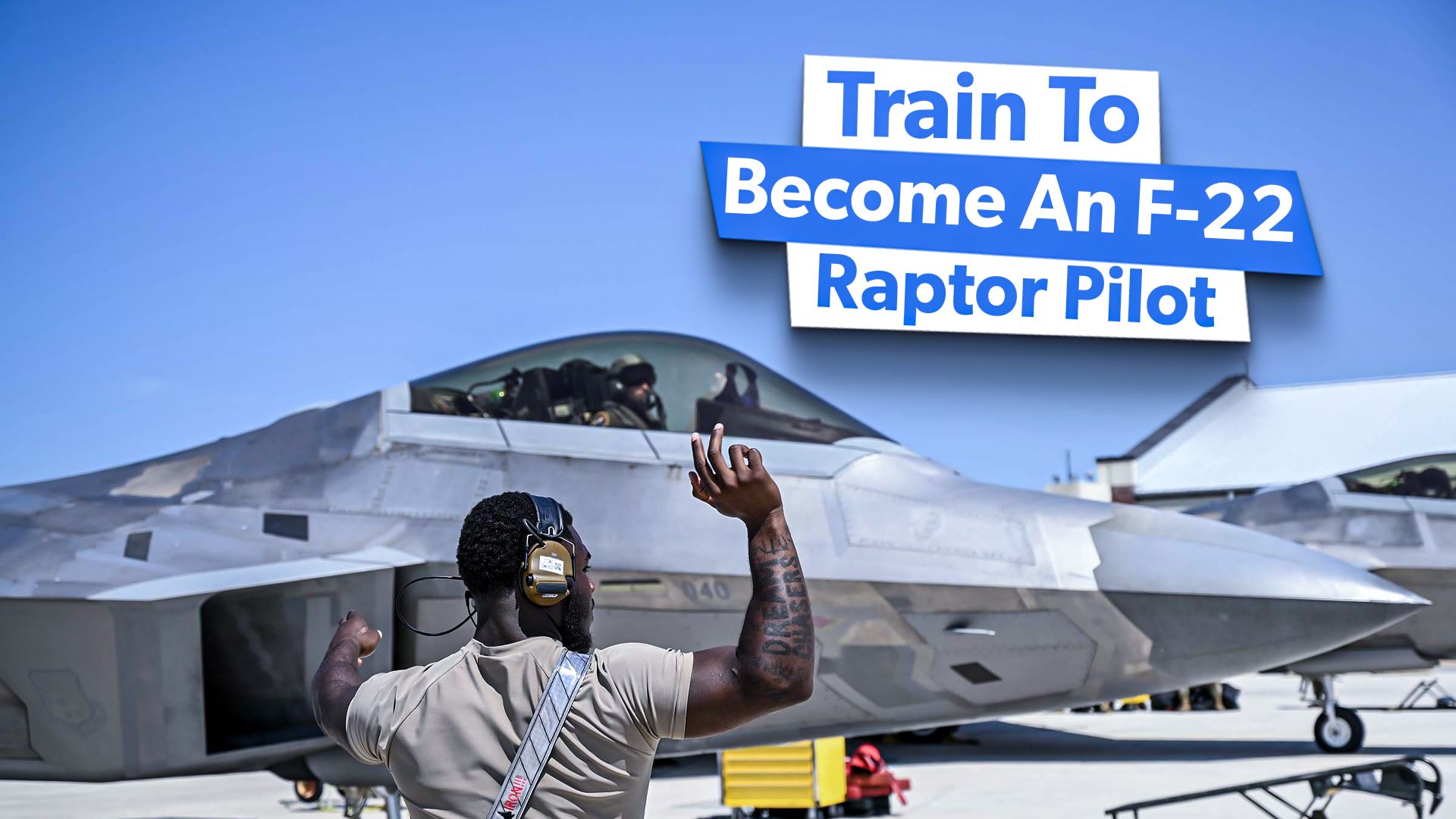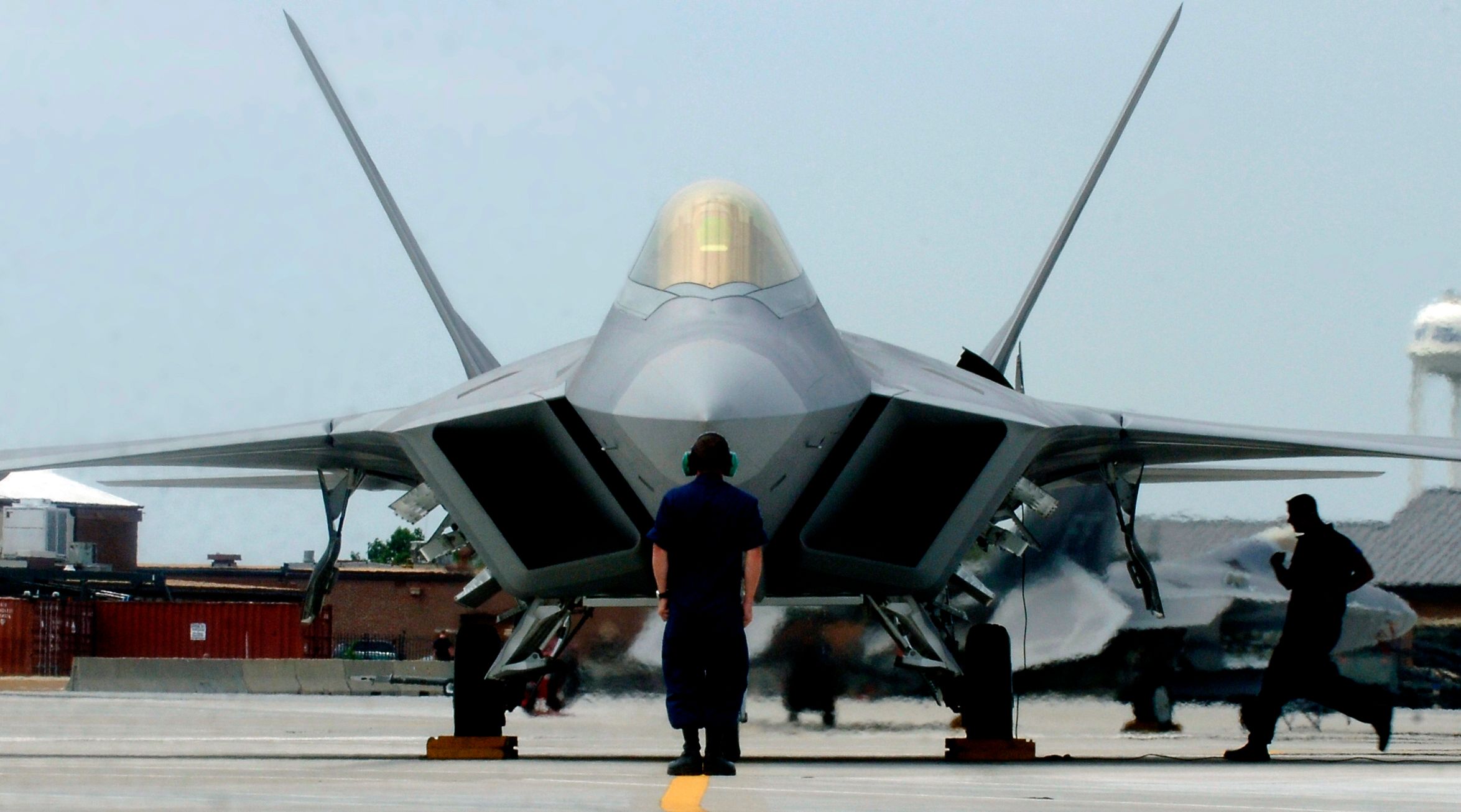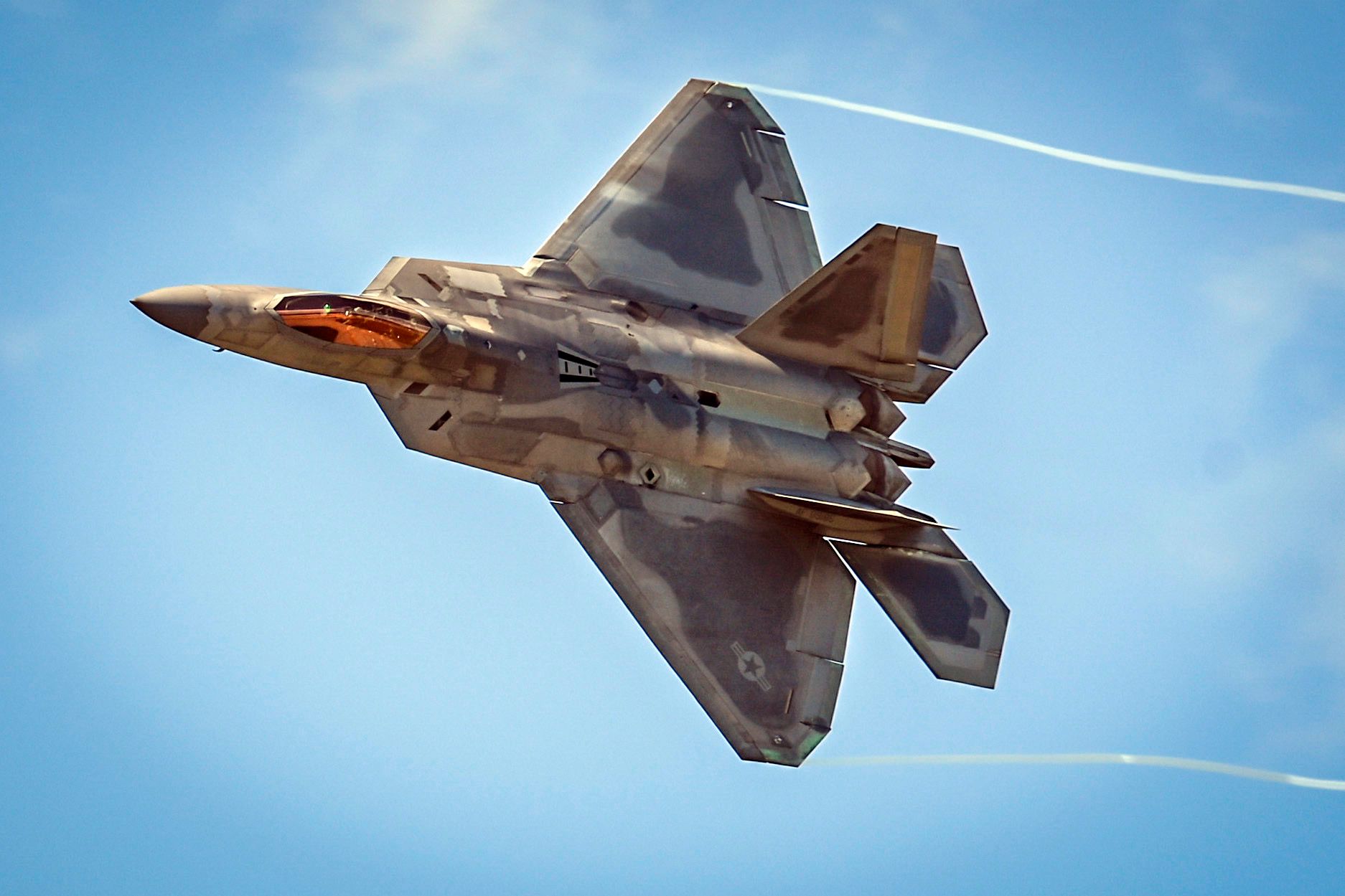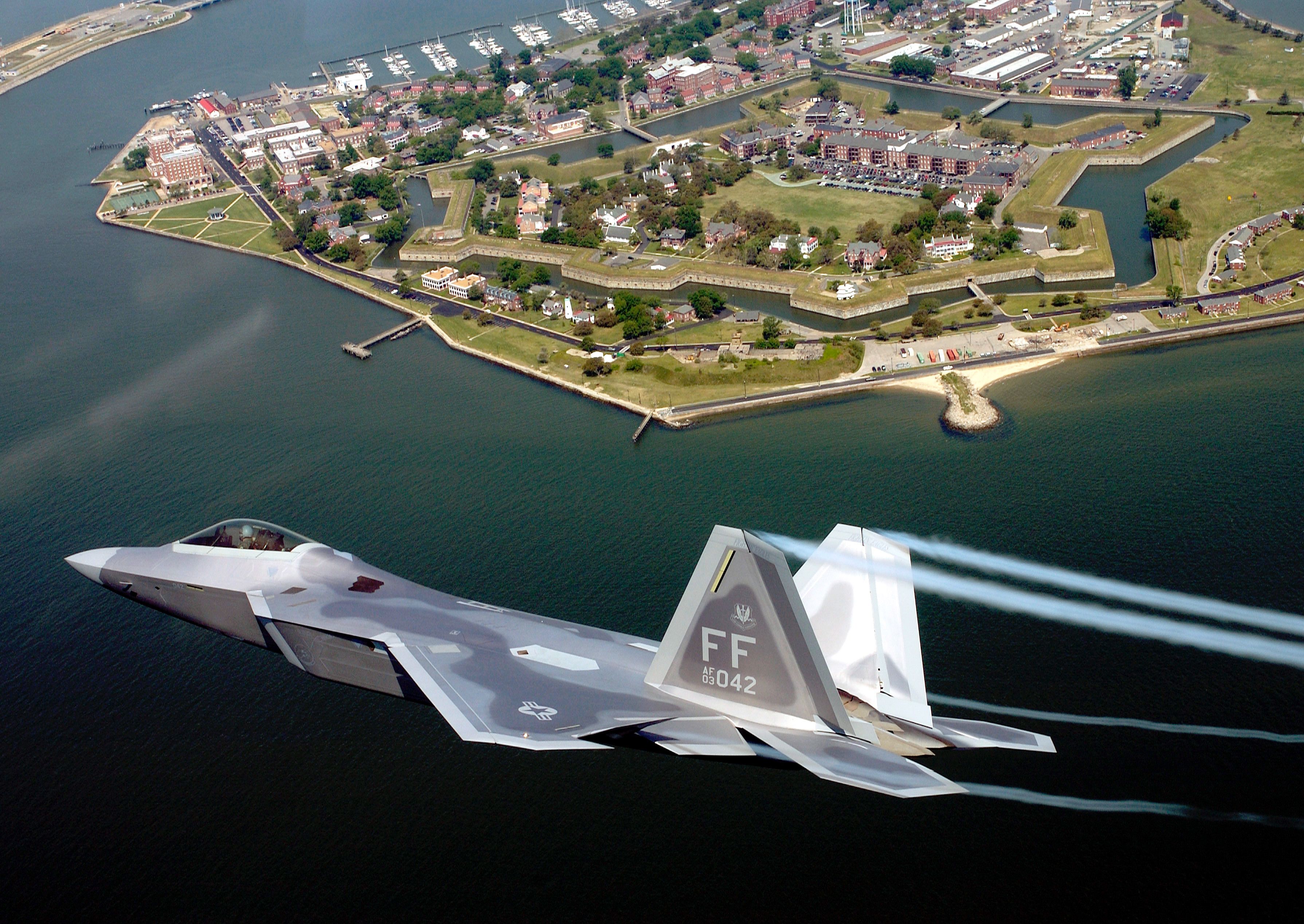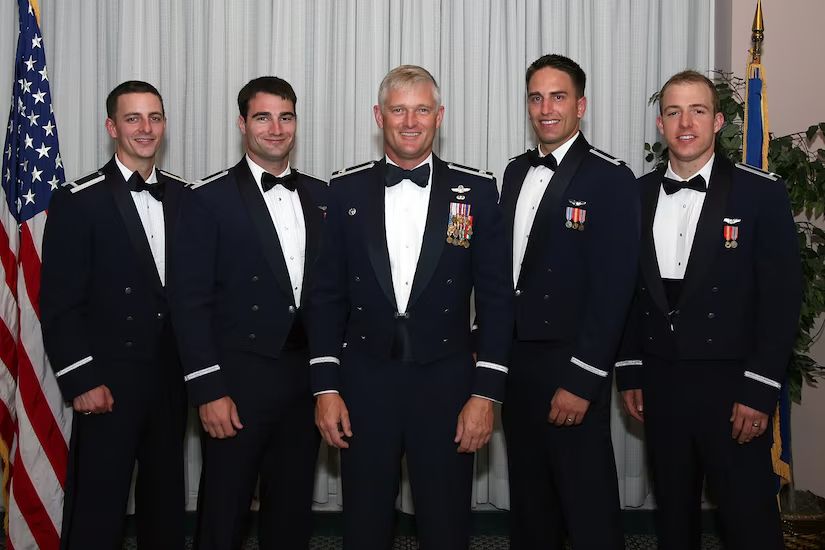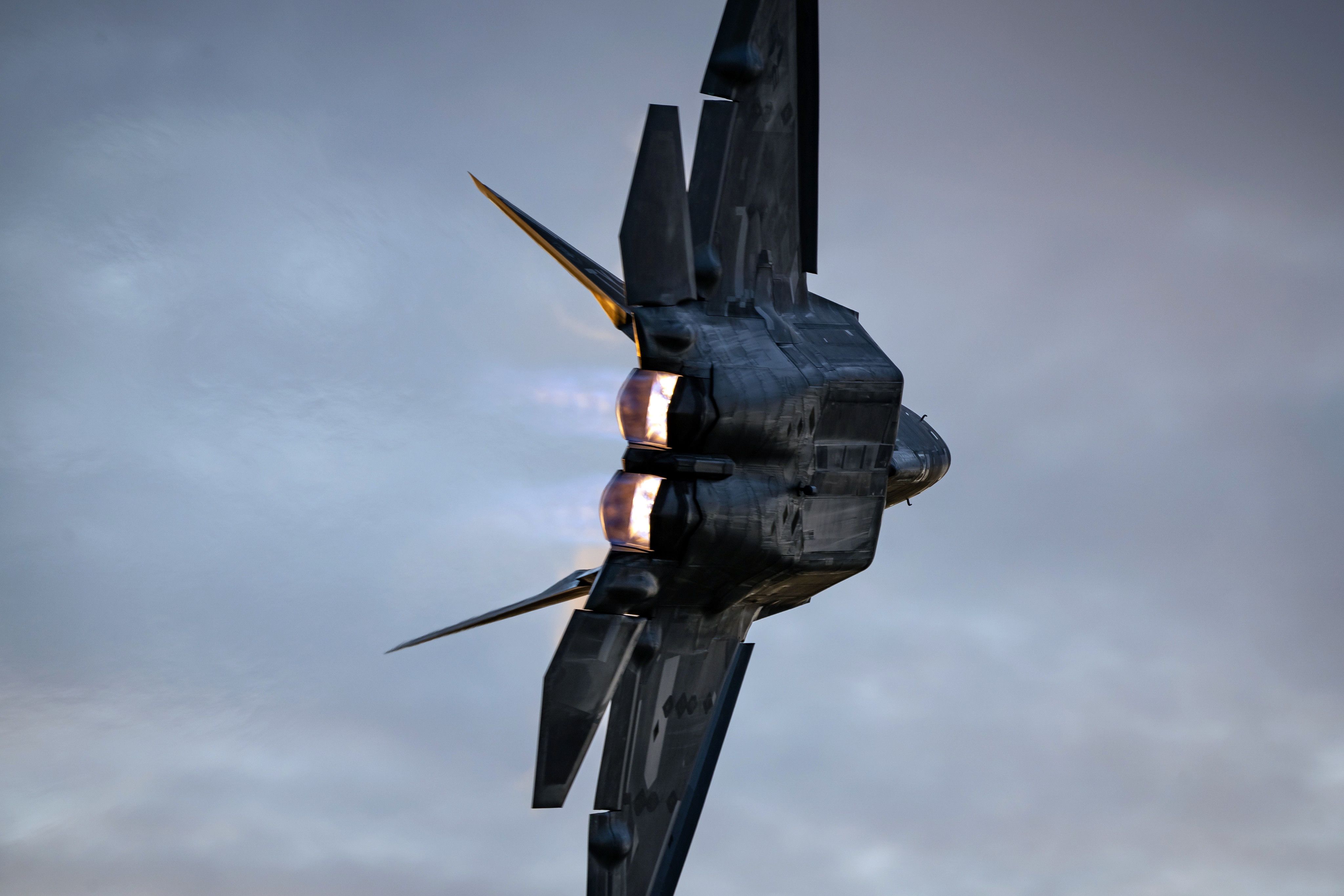Summary
- Pilot applicants must meet age, citizenship, health, physical, vision, and education requirements.
- Officer training through AFA or ROTC is required; no flight experience is needed.
- Pilots go through rigorous training, including academic studies, flight training & MASS scoring.
Whether from watching epic Hollywood blockbusters like Top Gun, attending high-flying air shows, or building diecast models as a child, becoming a fighter pilot is a dream for many, though one realized by a select few. The path to finding oneself seated in the cockpit of a military fighter aircraft is as challenging as it is rewarding, designed to push aspiring pilots to their limits and beyond. If you’re interested in what it takes to become a fighter pilot or have ever wondered, “How long does it take to become a fighter pilot,” or “Am I too old to become a fighter pilot,” or “What are the height requirements to be a fighter pilot,” this article will answer those questions and more, detailing the steps to becoming an F-22 Raptor pilot in the United States Air Force.
Photo: Senior Airman Christopher L. Ingersoll | USAF
First things first
Of course, the United States Air Force (USAF) isn’t going to hand over the keys to a $143 billion aircraft to just anyone. Before an applicant can begin training to fly an F-22 Raptor, they must first complete the necessary steps to earn their wings as a USAF pilot. The first step is meeting
certain basic requirements:
- Must be between 18-33 years old
- Must be a United States citizen
- Complete a medical/physical evaluation to determine fitness and health
- Vision of or correctable to 20/20
- Standing height between 64-77 inches and a sitting height between 34-40 inches (waivers allow for exceptions)
- Must possess or be nearing completion of a bachelor’s degree from an accredited institution
- Must possess or be nearing completion (minimum 90 credit hours) of a bachelor’s degree from an accredited college.
- Must be an officer in the USAF
- Must complete a Single Scope Background Investigation (SSBI): The SSBI is used to determine whether the applicant can handle the enormous responsibility of flying a U.S. military fighter aircraft by looking at the applicant’s credit history, criminal records, academic history, employment history, social media presence, etc. A few speeding tickets as a kid? – don’t sweat it. Grand theft auto conviction, on the other hand, may be problematic.
Waivers exist for many USAF pilot requirements.
No previous flight experience is required to become a fighter pilot in the USAF.
Photo: Tech. Sgt. Steven Tucker | USAF
No degree? No problem.
Those who do not already possess a bachelor’s degree have two options to earn a commission as an officer in the USAF:
- Air Force Academy (AFA)
- Reserve Officer Training Corps (ROTC)
The AFA is a four-year program located in Colorado Springs, Colorado. Here, cadets earn a bachelor’s degree at no cost and a commission as an officer in the USAF. As the AFA is a military institution, the program is more rigid than a traditional college, though fewer distractions can foster improved focus and academic performance. Statistically, attending the AFA is the best route to becoming a pilot in the USAF.
ROTC is a competitive scholarship-based four-year program in which students attend one of 1700 participating traditional colleges and attend weekly military classes. Upon completion, students earn a bachelor’s degree and are commissioned as officers in the USAF.
During their junior and senior years in the AFA and ROTC programs, cadets and students provide a list of desired USAF career fields in order of preference. Career fields are awarded based on academic merit and associated factors. The highest achievers stand the best chance of being awarded their number one career field preference. Since “pilot” is the most sought-after career field, cadets and students must strive for excellence and rank near the top of their class or risk moving on to other USAF career fields.
Those already possessing a bachelor’s degree must apply for a pilot slot in Officer Training School (OTS), a nine-and-a-half-week program at Maxwell AFB in Alabama. Acceptance into OTS means the applicant will be assigned a pilot slot, though specific airframe assignments remain unknown until much later in USAF pilot training. More on that later.
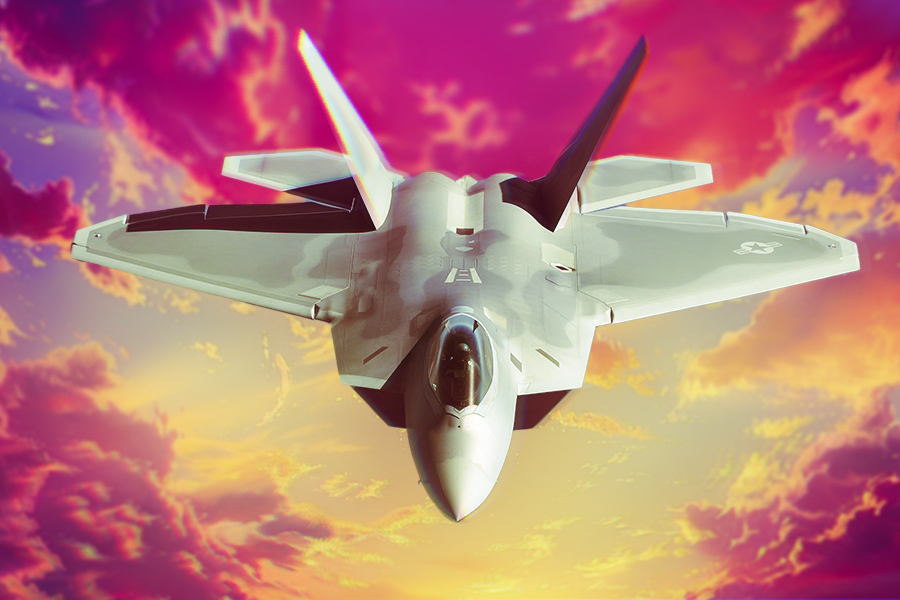
Related
Explained: The Strengths & Weaknesses Of The F-22 Raptor Fighter Jet
The Raptor’s incredible power and stealth make it the most dominant fighter on the planet, but its cost and obsolescing technology hold it back.
Ace the exams!
In addition to maintaining academic excellence throughout college, aspiring pilots attending OTS, AFA, or ROTC must take the Air Force Officer Qualification Test (AFOQT) and Test of Basic Aviation Skills (TBAS). The AFOQT determines USAF career field eligibility. Those who wish to be pilots (or navigators) must achieve a minimum score on specific sections of this test. Despite its name, the TBAS isn’t a test of one’s actual flying skills (remember, prior flight experience is not required) but rather tests spatial awareness, multitasking abilities, and psychomotor skills.
Resources are available online to help prepare for the AFOQT and TBAS. A candidate’s combined AFOQT and TBAS scores amount to a Pilot Candidate Selection Method (PCSM) score, which measures aeronautical aptitude and acts as a predictor of success during Undergraduate Pilot Training (UPT).
Congratulations, you’ve been accepted into USAF pilot training!
Candidates who rank high enough in their class and earn a qualifying PCSM score are accepted into the USAF pilot training program go on to attend Initial Flight Training (IFT) in Pueblo, Co. IFT is an introductory 40-day program in which participants learn and perform basic flight maneuvers in a Diamond Aircraft DA-20 in preparation for UPT, which takes place at one of four USAF training bases:
- Columbus AFB, Mississippi
- Vance AFB, OK
- Laughlin AFB, TX
- Shepherd AFB, TX
The UPT syllabus consists of three phases:
- Phase 1: Academics– Six weeks of academic instruction, including pilot physiology, egress training, mission planning, aircraft systems, weather, etc. Pilots will be tested on each subject and must score at least 85% on each exam. Failure to score 85% after three tries results in washing out of the program.
- Phase 2: Flightline– Six months of Primary Aircraft Training on a Beechcraft T-6A Texan II. Throughout Phase 2, pilots will study aerospace physiology, aerodynamics, navigation, and formations, among other subjects. Pilots must pass nine tests before getting strapped into the T6 for approximately 90 hours of flight training and instruction.
Testing and flight performance throughout Phase 2 determines a pilot’s Merit Assignment Selection System (MASS) score, which determines their ranking among the class and subsequent Phase 3 Track selection. This is an extremely competitive process, so performing at the highest level throughout Phases 1 and 2 is critical. A pilot’s MASS score is tabulated using the following breakdown.
- 10%: Test scores
- 20%: Flight Commander ranking
- 30%: Daily flying rides
- 40%: Check rides
Upon completion of Phase 2, MASS scores are tabulated, and pilots are ranked among their class. The higher a pilot ranks among their class, the more likely they will be awarded the most desired track in Phase 3: fighter aircraft.
- Phase 3: Advanced Aircraft Training- one of three tracks:
- Track 1. Airlift and tankers (B-52 Stratofortress, B-1B Lancer, B-2 Spirit, B-21 Raider, etc.)
- Track 2. Fighter/bomber (F-22 Raptor F-15 Eagle, F-15EX Eagle II, F-35 Lightning, etc.)
- Track 3. Helicopters
As it is the most desirable, only those ranked in the top third of their class will move on to Track 2, which assures pilots of either a fighter or bomber aircraft airframe assignment. Phase 3 is much like Phase 2. Over six months, pilots will receive academic instruction and approximately 120 hours of flight instruction on a T-38 Talon, focusing on visual flying, two and four-ship formations, instruments, and navigation.
During this time, pilots will have the opportunity to submit a “dream sheet,” listing potential fighter/bomber airframe assignments in order of most desire. Those wishing to fly the F-22 Raptor would naturally put the F-22 atop the list, but that doesn’t guarantee an F-22 assignment. Once again, airframe assignments are awarded on merit and class ranking as determined by their Phase 3 MASS score. To be awarded an F-22 airframe, a pilot must finish near the top of their class.
The needs of the USAF always come first. In some cases, a pilot’s most desired airframe will not be an option.
Drop Night: Airframe assignments finally revealed
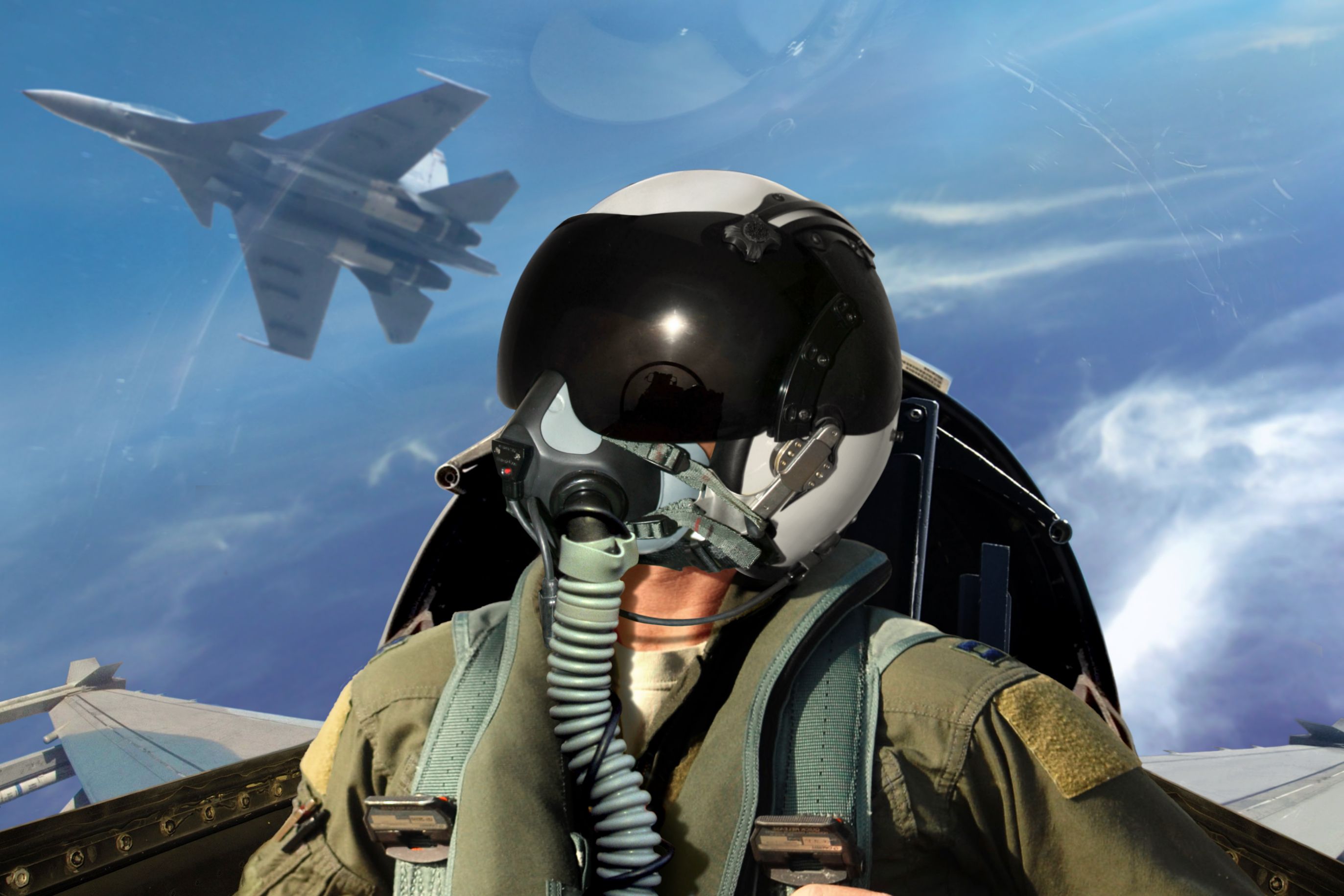
Related
Do Fighter Pilots Fly The Same Aircraft For Every Mission?
The answer is more complex than you might initially expect.
Upon completion of Phase 3, pilots attend a UPT graduation ceremony where they receive their silver wings. Following graduation, pilots will attend Assignment Night, also known as “Drop Night,” a celebratory event marking the culmination of a lengthy and demanding journey toward becoming a pilot in the USAF. It is a Drop Night when the pilot’s airframe assignment is finally revealed. Those who earned a ranking atop their class during Phase 3 will be awarded their dream airframe, for many, the highly coveted F-22 Raptor.
It costs the U.S. military $13.1 million to train an F-22 Raptor pilot.
It should be noted that aspiring F-22 pilots can increase the likelihood of being awarded an F-22 airframe by applying to specific USAF Reserve (USAFR) or National Guard (USANG) units that fly F-22s (see below). However, USAFR and ANG pilots must attend the same training and are subject to the same competitive MASS score class ranking system as USAF pilots. Therefore, pilots opting for the USAFR or ANG routes may not rank high enough in their class to be awarded an F-22 airframe, leaving them subject to potentially undesirable outcomes. The following USAFR and ANG units fly the F-22 Raptor:
- 149th Fighter Squadron, Langley Air Force Base, Virginia (USANG)
- 199th Fighter Squadron, Joint Base Pearl Harbor, Honolulu, Hawaii (USANG)
- 44th Fighter Group, Tyndall Air Force Base, Florida (USAFR)
- 477th Fighter Group, Joint Base Elmendorf-Richardson, Alaska (USAFR)
- 926th Wing, Nellis Air Force Base, Nevada (USAFR)
Photo: Tech. Sgt. Ben Bloker | USAF
Strapped into the Raptor
The entirety of F-22 pilot training initially took place at Tyndall AFB in Florida, but the devastation left behind by Hurricane Michael in 2018 forced the F-22 flight training portion to be relocated 90 miles west to Eglin AFB while F-22 academic studies continued to take place at Tyndall. In 2021, F-22 flight training found its new home at Joint Base Langley-Eustis (JBLE), Virginia’s 71st Fighter Squadron. F-2 Raptor training begins with three months of academic instruction at Tyndall AFB, after which pilots receive six months of F-22 flight instruction at JBLE, which is divided into four phases:
- Advanced handling characteristics
- Basic fighter maneuvers
- Beyond visual range intercepts
- Air combat tactics
“The phases are designed to get the pilots from not knowing anything about the airframe to graduating and being our next air dominance professionals,” Capt. Spencer Bell, 71st Fighter Squadron flight commander
“My first flight was mind-blowing. I could feel the immense amount of power that the machine had to give, and it’s unlike anything I’ve ever flown before.” U.S. Air Force Capt. Chas Ballard, F-22 pilot
The first class of F-22 pilots, pictured below, graduated in 2008. Flight Commander, Captain Jonathan Gration, is flanked by Capt. Marcus McGinn and 1st Lts. Dan Dickenson, Ryan Shelhorse and Austin B. Skelley.
Photo: Staff Sgt. Vesta M. Anderson | U.S. Air Force
“You cannot use the Raptor’s capabilities of super-cruise, avionics, stealth, and enhanced maneuverability if you don’t know your stuff. Each and every day, you study your heart out to make sure that you can execute well enough to use the advantages the Raptor has over any other legacy-type fighters. If you fail to study, then you fail to succeed.” 1st Lieutenant Ryan Shelhorse of the 1st graduating F-22 Raptor class
While completing F-22 pilot training is an accomplishment deserving of great pride and distinction, it is only the beginning for those who dream of being the best of the best. For them, the training has only just begun, as they set their sights on USAF Weapons School (USAFWS), the USAF’s answer to the U.S. Navy Fighter Weapons School (Top Gun). Upon graduation from USAFWS, pilots emerge as Weapons Officers and Advanced Instructors, leading squadrons of F-22 Raptors into combat and providing top-level U.S. military decision-makers with strategic and tactical support.
So, there you have it. Successfully completing the USAF pilot training program requires a level of commitment, endurance, perseverance, and mental fortitude, of which few are capable. Of those capable, the title of “F-22 Raptor pilot” is reserved for the truly elite. It’s an exceedingly challenging and demanding endeavor, though one that will likely provide the most rewarding experience of a lifetime. If you think you’ve got what it takes, start your journey today.
Photo: Tech. Sgt. Ben Bloker | USAF

